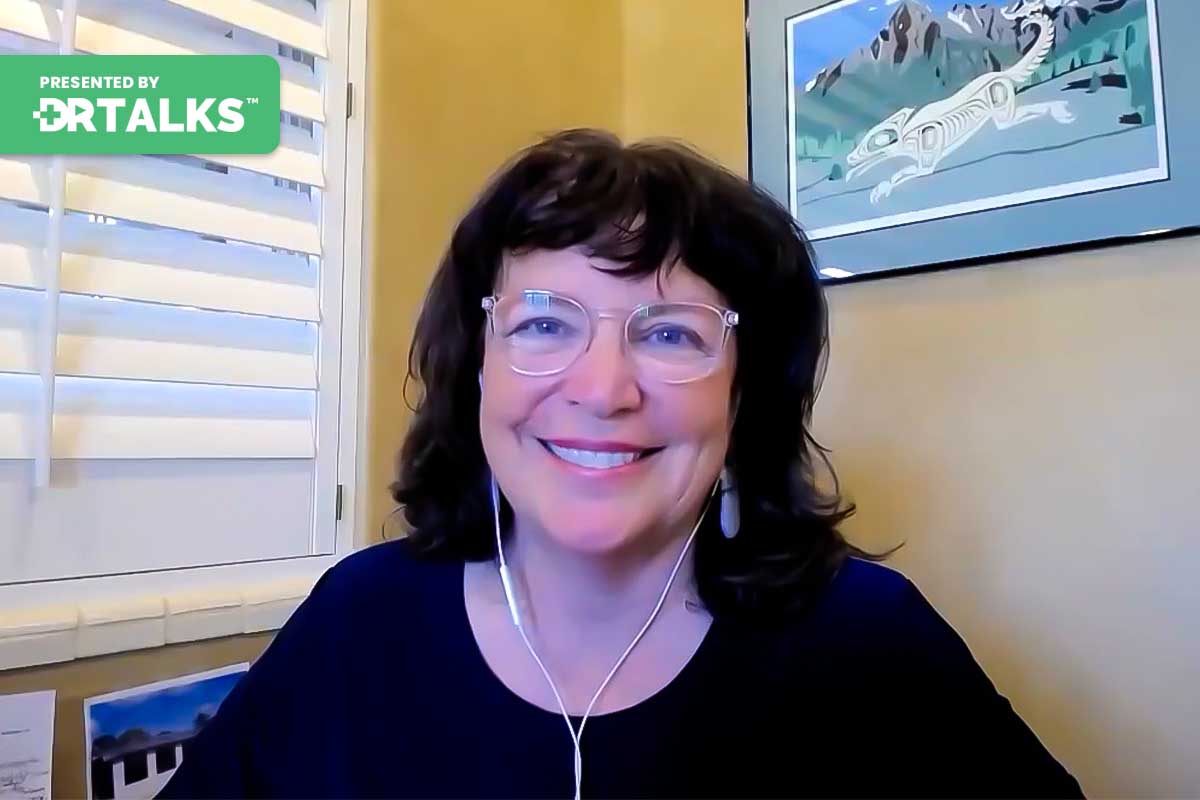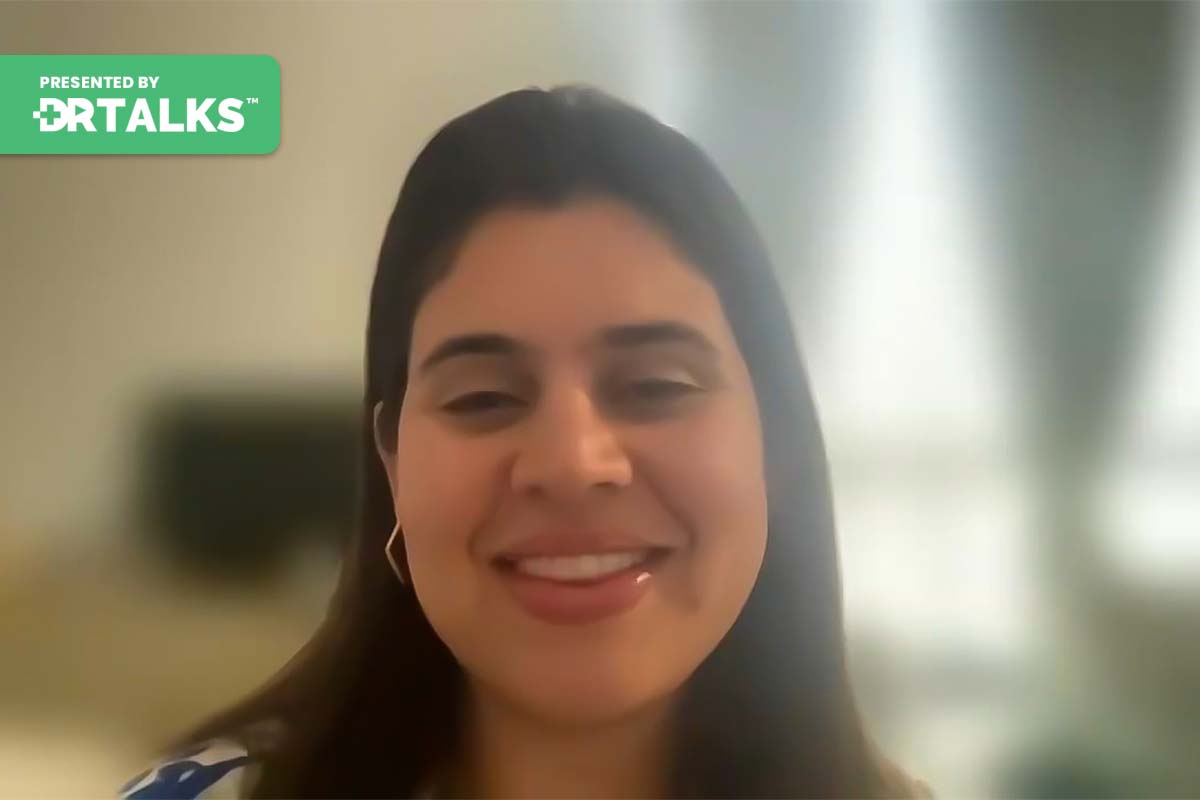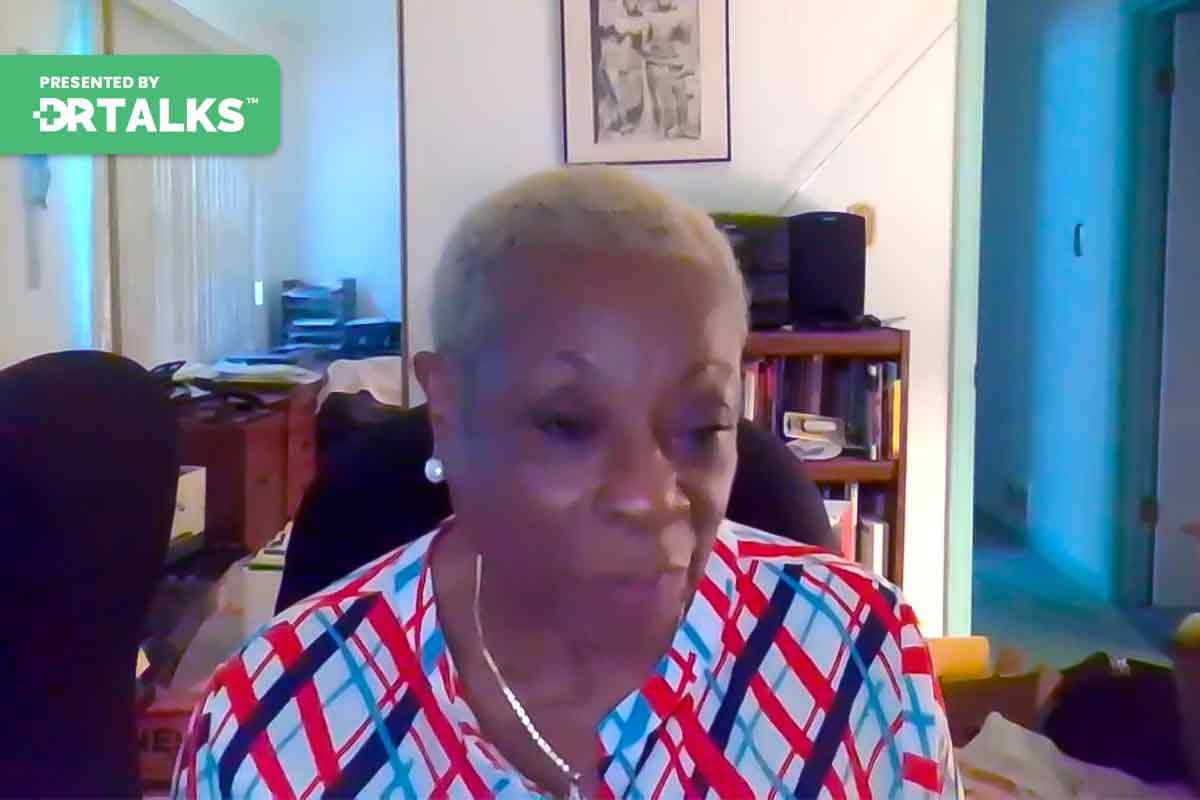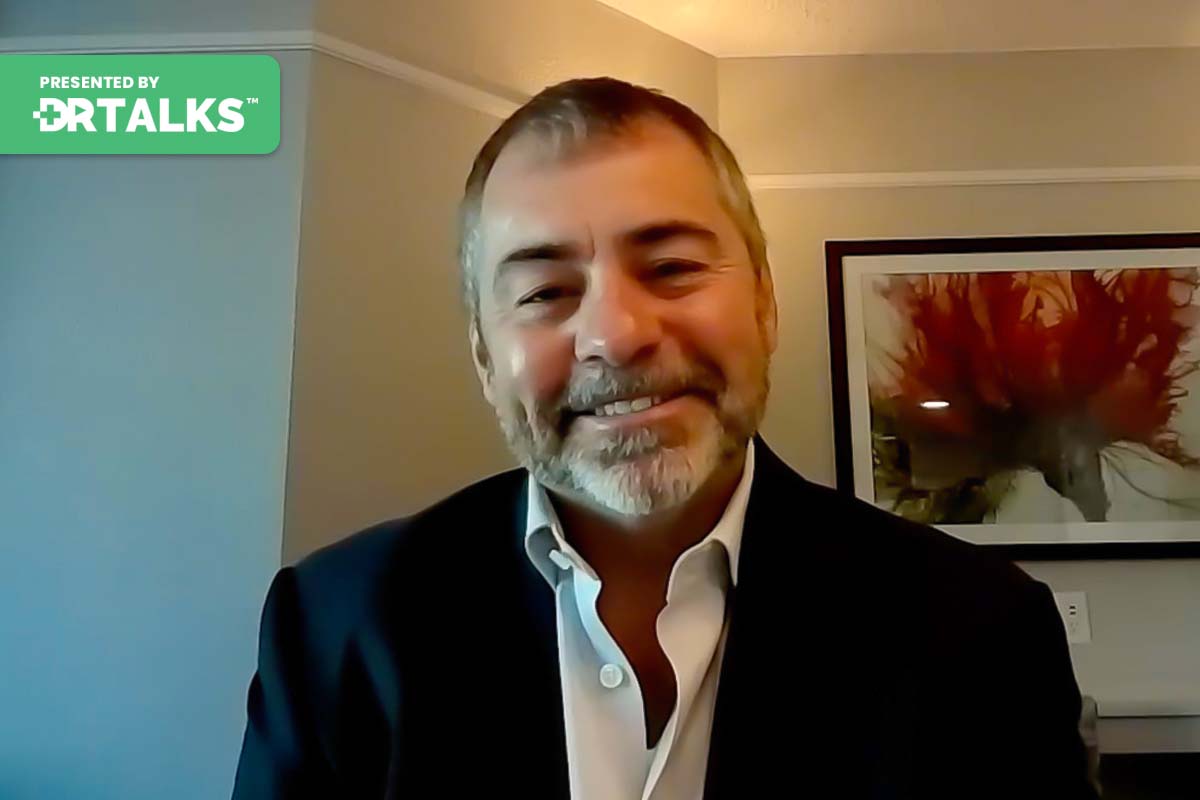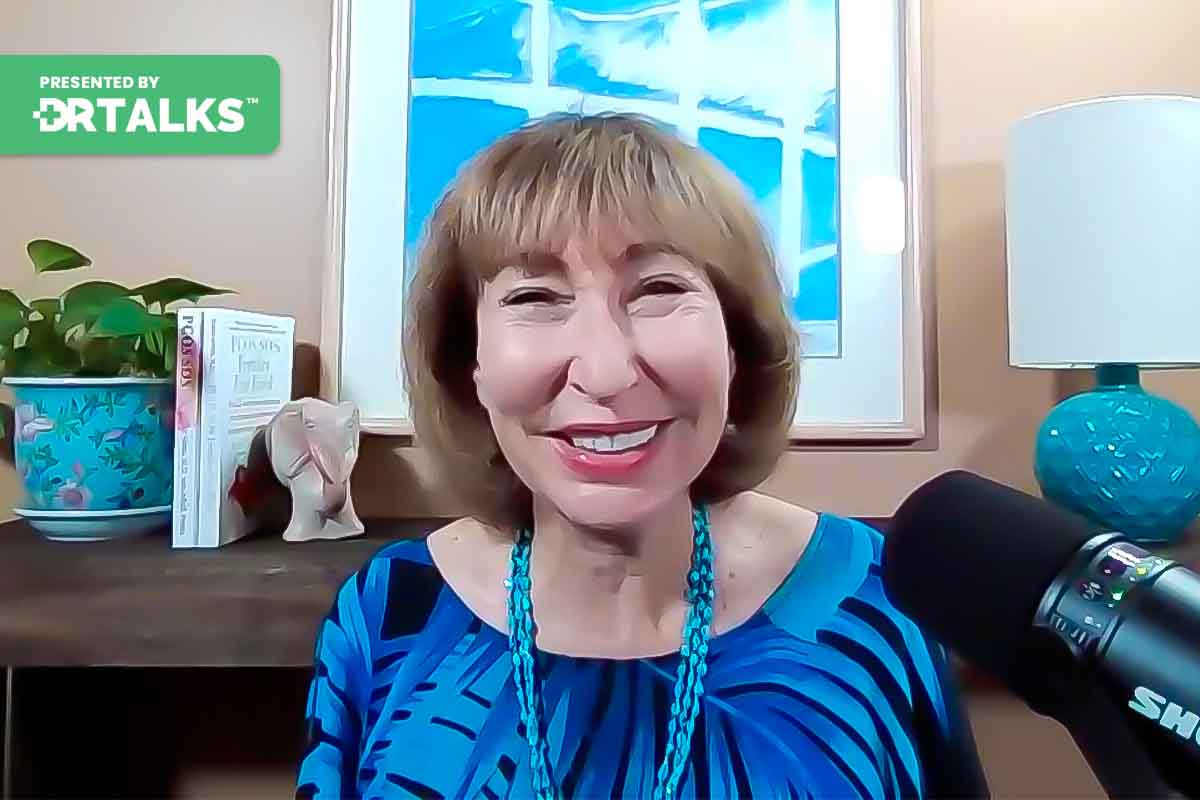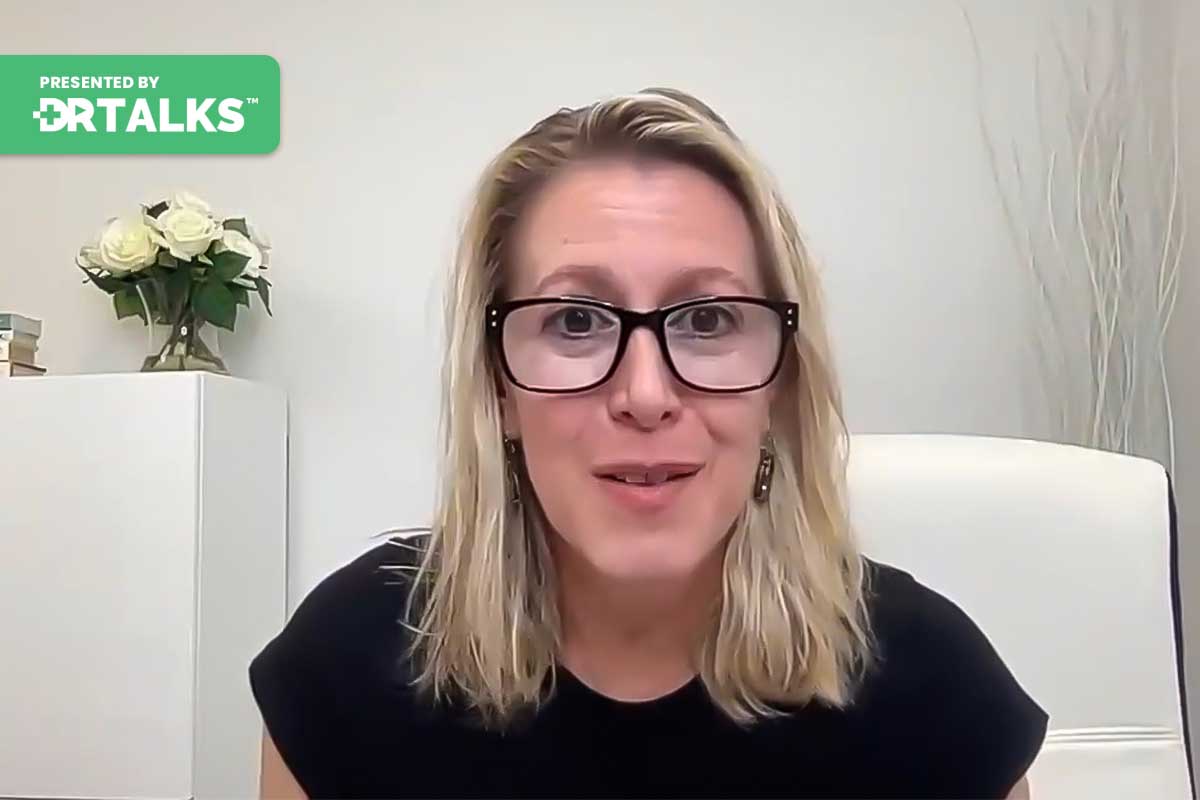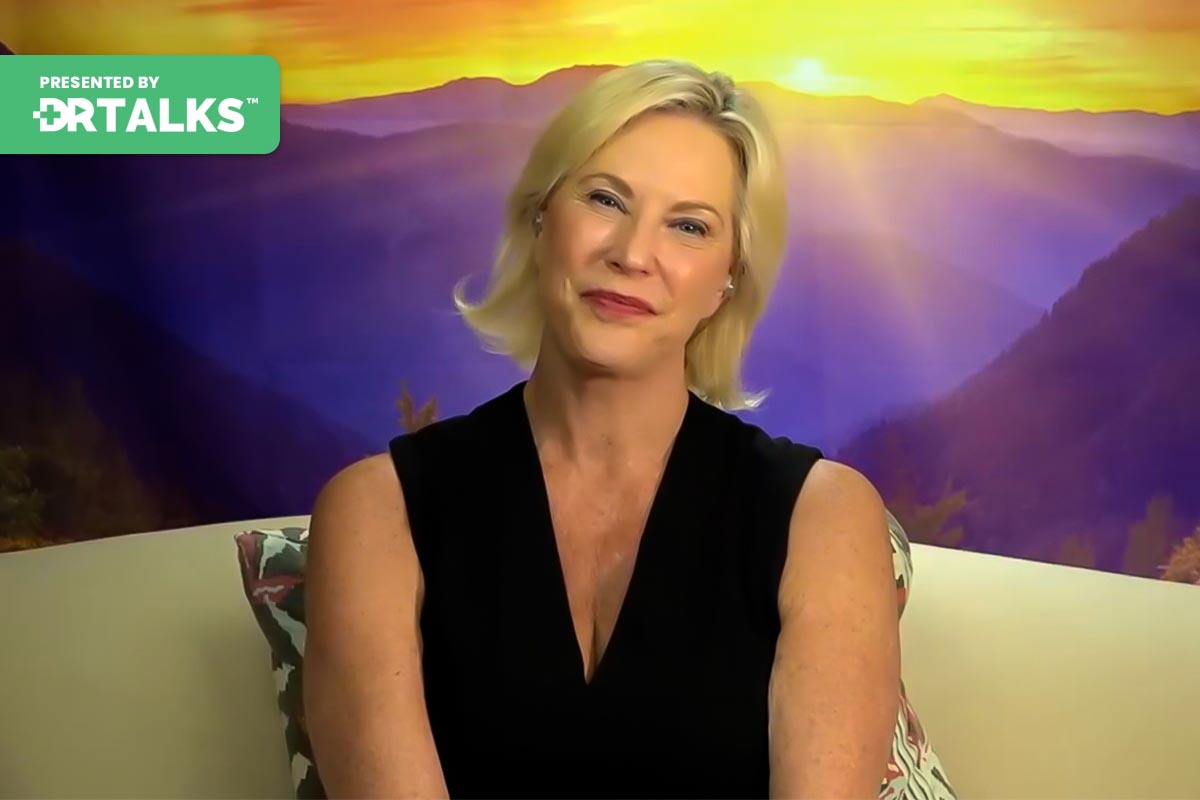Join the discussion below
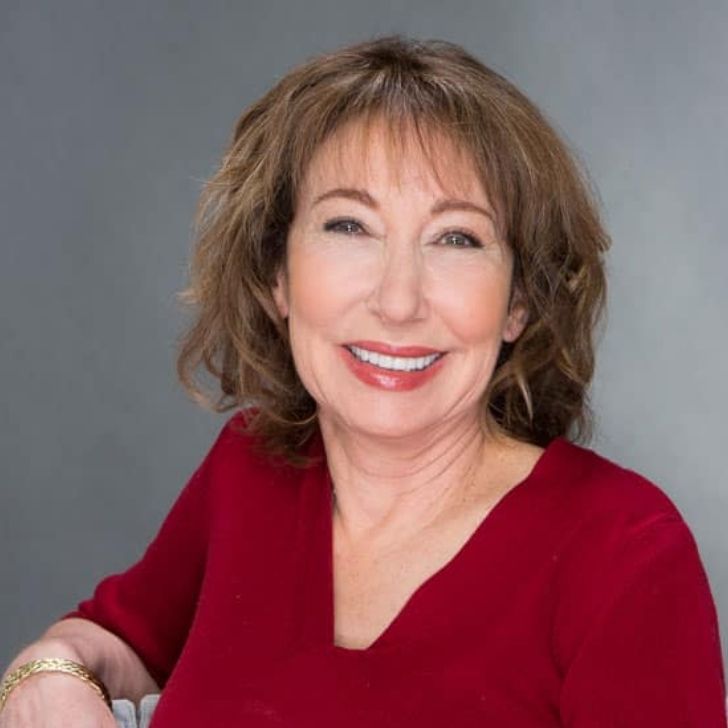
Felice Gersh, MD is a multi-award winning physician with dual board certifications in OB-GYN and Integrative Medicine. She is the founder and director of the Integrative Medical Group of Irvine, a practice that provides comprehensive health care for women by combining the best evidence-based therapies from conventional, naturopathic, and holistic... Read More
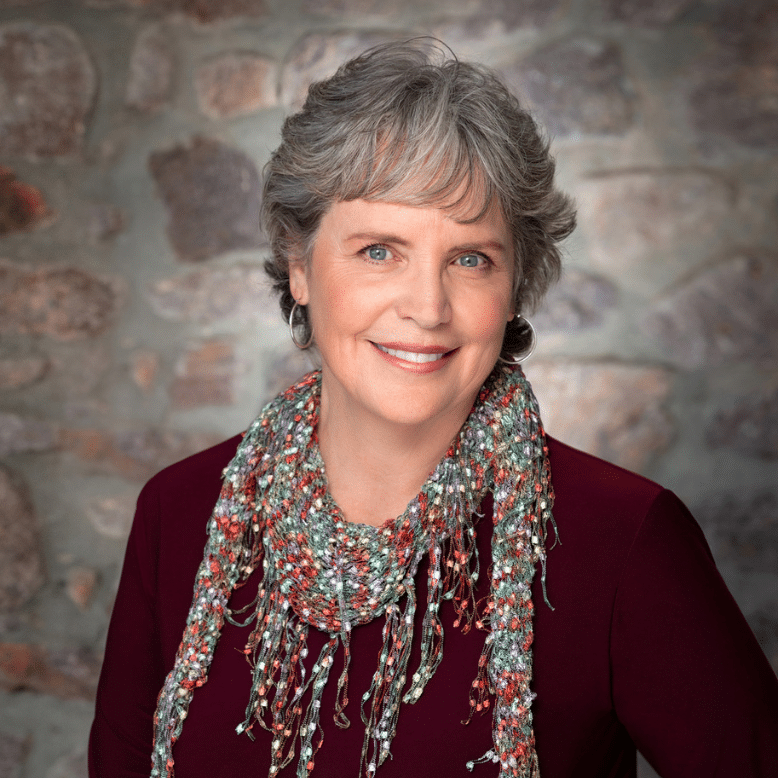
Ann Marie Chiasson, MD, MPH, is the Director of the Fellowship at the Andrew Weil Center for Integrative Medicine. She is an Associate Professor of Clinical Medicine in the Department of Medicine at the University of Arizona. She is board-certified in Integrative Medicine, Family Medicine, and Hospice and Palliative Medicine.... Read More
- Understand the relation between the energy field and the physical body
- Learn how energy movement can assist with PCOS symptoms
- Discover techniques to move energy in the physical body for better health
- This video is part of the PCOS SOS Summit
Related Topics
Acupuncture, Babies, Balancing Energy, Bladder Infections, Cells, Chronic Illness, Chronic Pain, Conventional Medicine, Dual Collecting System, Energy Flow, Energy Medicine, Fertility Issues, Hands-on Healing, Holistic Healing, Infectious Disease, Medical School, Meridians, Moodyway, Oxytocin, PCOS, Pelvis, Pets, Physical Body, Practitioner, Stagnation, Therapeutic Touch, Touch, Traditional Chinese Medicine, Trauma, Vital Force, X-ray, YogaFelice Gersh, MD
Welcome to this episode of the PCOS SOS Summit. I’m your host, Dr. Felice Gersh. With me for this very exciting episode is a longtime friend of mine, Dr. Ann Marie Chiasson. She is a very unique skilled practitioner. She is triple board certified in family medicine, integrative medicine and hospice and palliative care. She’s an M.D. and a master’s in public health. She is the director of the Fellowship in Integrative Medicine at the Andrew Whale Center at the University of Arizona School of Medicine, where she’s on the faculty in the Department of Internal Medicine. And she is an expert in energy medicine, a very important but underutilized area of medicine for healing. She taught me when I was a fellow at the Fellowship about this important topic. I had no training in my medical school, I can tell you that. Or even after words until I met her. And it was really profound, the change it had on me and my perception of healing and human health. So welcome. Thank you so much for joining us. And I need to have you share with our audience a little bit about your journey and how you became interested in energy, medicine. And then, of course, will do a deep dove into what it means and how it relates to women with PCOS there.
Ann Marie Chiasson, MD, MPH
Hi Felice. It’s really nice to be invited. Thank you so much. So my journey into medicine and energy healing was a little unusual. I started off doing Energy Healing a little bit as a kid, and then I was working actually as an infectious disease epidemiologist, and I started learning energy healing. And I had a chronic illness. I had chronic bladder infections my whole life and a dual collecting system, which means I had an extra kidney. And once I got that fixed, I still had chronic pain. And so I started seeing energy healers all the time. And so when I went to medical school, medicine was placed on top of energy healing. In medical school, I would scan patients and see what I could feel with my hands and their energy field, and then I’d run down and see what the X-ray showed.
So for me, medicine was layered in on top of energy healing. I wouldn’t say I’m an expert, but I’ve been doing it for a long time and I really enjoy it. So I’ve been always putting the two together and you know, you can’t really separate conventional medicine from energy medicine in some ways, you know, clinicians have quite skilled hands. So the nurses so to mothers, you know, it’s a natural it’s really a natural skill. We’re all already all doing. And so that’s why I like to share it with medical professionals and other people, because I find it helpful. You know, there’s a lot of good evidence for at least for me, it helped with my chronic pelvic pain. There’s a lot of excellent evidence that helps with pain, helps with stagnation, helps with sluggish energy in the body. And since everything’s energy, you could also include traditional Chinese medicine, yoga. You know, they are Vedic traditions. They’re all based on energy. So everything’s really based on this whole system of the body, which is physical and energy and the organs and the blood flow and the bones. And it wasn’t until the late 1700s when what we now call conventional medicine split off from regulate, you know, from the entire whole of medicine and said, no, no, no, it’s just the organs. But all the older traditions have some basis and energy. So the more I’ve been studying, the more I’ve been learning that traditional Chinese medicine is amazing. And especially for PCOS and energy healing is really helpful for pain and for lots of other things. So I’m really excited. We’re going to talk about it today.
Felice Gersh, MD
Well, for you, especially in me as well. Energy healing is just well, of course, we are going to include energy healing, but I think a lot of the viewers out there probably have no clue. Like, what are you talking about? Energy like, what does that even mean? And what? Just maybe just talk about what is energy in the body and how does that relate to the physical being and how do we even, like, detect it or measure it or deal with it?
Ann Marie Chiasson, MD, MPH
Yeah, that’s a great question. Thank you for bringing me back to the beginning. So energy, medicine or energy healing or now the new name BioShield Medicine is based on the fact that there’s an underlying flow of energy or vital force in the body. It goes back to Hippocrates, used to talk about the vital force. And so I like to think of it as the vital force or the energy flow is the soil and the body is the plant that grows out of it. So there is always energy flow in the body. It’s not that easy to measure, but we’re starting to find ways to measure it. Now there’s something called GDB and a few other things that can measure the flow of energy in the body. And we think that the flow of energy in the body and this is ancient and now coming into conventional medicine, but the underlying flow of energy in the body has to do with the vitality and health of the cells.
So the energy field with a trauma, you know, let’s say I cut my arm, then the energy body and the physical body would happen at the same time would be disrupted at the same time, but in other traditions, for things like chronic illnesses, the energy slows off a little bit and then the cells start to work improperly. You have symptoms and then pathology. If you don’t know what I mean about energy healing, look at a map of the meridians and traditional Chinese medicine. That is a perfect example of the meridians and these little lines that they have under the skin, mapped out. Most people can find a meridian map and it turns out those that were mapped out 4000 years ago now actually have evidence they’re accurate. So you can see that they’re places right under the skin that have flows of energy. There was a gentleman in the sixties that injected some rabbits and showed that the rabbits had different lines where fluid would move that weren’t our lymphatic system, that were predictable. You know, we have some evidence backing this up starting in the fifties. In the sixties, even though it’s 4000 years old.
So when people talk about energy healing, they’re mostly talking about laying of the hands on the body. Yoga movement will do it. Wind will do it. You know, electricity will do it. Vibration will do it. Sound will do it. The needles will do it. That’s traditional Chinese medicine. Qigong, which is out of traditional Chinese medicine, like yoga, will do it. So lots of things will move the energy. But people are often talking about laying of the hands on the body or right over the body as well. So there are so many different forms of laser, Reiki and healing touch and you know, ortho, bionic and 2.0, everyone is starting to do it there quite a bit. There was an estimate a few years ago that there are a million people in the United States that are trained in doing some laying of the hands on the body.
The thing I find most interesting about the laying of the hands on the body is that if it’s done with reverence or with compassion, it increases oxytocin. So Tiffany Fields at the University of Miami has done a lot of research on touch, and she does it mostly with masturbate, massage or stroking touch. But she’s shown that just compassionate touch or stroking touch on the body increases oxytocin, and oxytocin helps us feel a lot better, helps us feel cared for, it helps with the placebo response. And so a lot of what we’re doing, I think in energy healing is not just moving the energy. I think we’re also creating oxytocin. So with my patients who are older or who don’t get a lot of touch, I also will send to an energy healer because they don’t they don’t have that kind of nourishment in their lives. You know, we need physical nourishment the same way we need, you know, food and water and exercise. So energy healing this vast it’s a vast field. And an energy healer will tell you everything’s energy. But mostly when we’re talking about energy healing right now, we’re talking about hands on healing. So going to see a rescue practitioner or healing touch practitioner or therapeutic touch practitioner, which is why we bring it into medicine because, you know, a physician and doctors and nurses touch physicians assistants and nurse practitioners touch patients all the time. And it turns out it’s the quality of touch that starts the oxytocin flowing in the body, which is quite helpful.
Felice Gersh, MD
Now, it’s really fascinating that how important touch is. I know that they talk about pets, right? That just touching pets and working with pets, touching them, petting them can really improve people’s health. And for babies, of course, they talk about a baby that doesn’t get touched, doesn’t develop properly. So it’s really triggering hormonal responses as well as is there a passing of energy from one person to another as well? Is that also possible?
Ann Marie Chiasson, MD, MPH
Yeah, that’s there’s a passing of energy and there’s also there’s also a balancing of energy. So let’s say somebody has a block here, you know, in their arm, you put a hand on both sides and just wait till the energy starts to go through. So, you know, issues like PCOS jump into that. Usually that’s some sort of chronic stagnation and in the lower half of the body, so meaning the slowest, it’s not stopped, but it just needs some extra help. So this is why, you know, things like pigeon pose in yoga are really helpful. Getting some energy healing. You know, there’s not a lot of research on things like Reiki or Healing Touch with PCOS. However, there’s a lot of research on acupuncture and that we know that there are systematic reviews which in medicine are one of the best kinds of papers you can read. There’s a few systematic reviews showing that acupuncture, which also moves energy, can help with some of the fertility issues around PCOS, the moody way you can move the energy in the pelvis. And I would say that a lot of people have stagnation in their pelvis, not just PCOS, because we sit all the time. So, you know, we’re sitting. And the number one thing I see in our culture is that we are this is traditional Chinese medicine. You’re supposed to be warm in the pelvis, neutral in the heart and cool in the head. And what I see in the culture that I’m living in right now in the United States, in a city, is that people are hot, neutral, and they’re cool in the pelvis.
So the same things that work for turning around, being in your head too much would also help with PCOS. So if somebody came to a piece of PCOS, I would work with, you know, something with their feet, maybe set them do it acupuncturist and then get them to run energy in their legs, you know, have them walk around outside, but then also start working with the hips, give them practices for themselves to decrease the stagnation in the hips. And like I said, I mentioned pigeon pose, which I love. And that’s easy to look up online. It’s not a hard post to get into it. Talking about doing it all day long. I’m talking about doing it, you know, maybe three or 4 minutes on each side, doing toe tapping, doing squats, doing yoga, if you can. You know, there’s a lot of really good evidence for yoga with things like endometriosis and other things in the pelvis. And you have to remember that the physical, the Western diagnosis does not meet the energy diagnosis. If there’s stagnation in the pelvis, it can create lots of different things. In Western medicine. You can’t say this energy problem causes this because there are different paradigms. Yet if you look in the research would look using yoga for things like chronic pain and endometriosis.
There’s actually some pretty good data. So that would be another way that I would go if I was using just the evidence. I would tell people acupuncture, shure, yoga pigeon and then the hands on healing always helps people feel better. So I think people with PCOS sort of feel ashamed that they have it, which is which, you know, to us that doesn’t make sense that they would feel ashamed. But most people I know that have PCOS are a little embarrassed. Like somehow they did it to themselves. It’s really just this stagnation. It’s coming in the last 100 years of not moving, sitting all the time. You know, we really are. We’re creatures that are supposed to be in motion. We’re animals, and our whole society is set up to get us sort of more stagnant in the lower half of our body. Even the way seats are made or car seats or airplane seats or you know, we’re not sitting in the way that we our bodies were designed, you know, a thousand years ago or how many. So 40,000 years ago, whenever our bodies started happening. 100,000 years ago.
Felice Gersh, MD
That’s true. I know in many cultures people squat. Is there something about squatting that may help move the energy better?
Ann Marie Chiasson, MD, MPH
And absolutely. And yet that’s not an easy thing to start with. You have to start with, I think pigeon and moving and some yoga poses. But squatting is excellent, really good because it also allows the root chakra, you know, to open. So in PCOS in stagnation in the pelvis, the root shocker said shut down the second chocolate, then shut down, which is why I like pigeons so much. And the legs, you need to keep the flow in the legs. But yeah, squatting would be great.
Felice Gersh, MD
Now I know that with PCOS there’s actually quite a bit of data using electrical current along with acupuncture, you know. Is that something?
Ann Marie Chiasson, MD, MPH
Electro acupuncture, that’s energy means actually.
Felice Gersh, MD
Right? That’s right. So I was just thinking about that. Is that just giving like a boost to the acupuncture?
Ann Marie Chiasson, MD, MPH
Yeah. Yeah. And it’s the same as hands. So, you know, you can put your hands on somebody and let the flow from this hand go to this hand and back and forth. That’s like electro acupuncture. You know, we know that there’s a slight, not slight, but a current coming out of the hands. And they’re also bio photons. So they’re showing now that we have light, imperceptible, almost light coming out of the hands, the forehead and a few other places on the body. So yeah, electro acupuncture is a wonderful thing to use. However, you know, the other thing and you just reminded me this Dr. Gersh, thank you as I use vibration. So I get one of those handheld vibration machines and I don’t like the percussion, which is what everyone’s using right now. So that’s all you can get a hold of. You can use the percussion. Okay. I like straight vibration, but the percussion and running up and down the legs and right along the place where the hip meets the thigh. So you can use other forms of energy. Like you said, you can sit in a chair that’s got massaging these chair machines.
Now that people stand on that vibrate you, that would be helpful too. So yeah, using a vibrating massage tool is another really good way to do it. If somebody doesn’t want to go sit in the chair and get a lecture, acupuncture, you know, here in Tucson, we have something called community acupuncture. So for $15 that a Groupon, you can go sit and get acupuncture done in a chair in a roomful of other people. So it’s affordable for a lot of people I take care of, don’t have that resource to go get a $100 acupuncture treatment every week. So I then teach them how to do it themselves. Pigeon use the vibration and then if they have the chance. Electro acupuncture. Yeah, electro acupuncture really reminds me of sort of like acupuncture on steroids or somebody hands on you. The good thing about the hands, what if you’re going to go see a practitioner is that you get the extra, you know, hormonal changes with the touch, right. That’s like you said. But the babies, the oxytocin, the thing that allows some of our brain pathways to feel better, that’s why it helps with chronic pain.
Felice Gersh, MD
Now talking about the touch and so on. Quite a few years ago I was trained in how to do a lymphatic massage, which is a very gentle, very light stroking kind of massage. So do you think that we’re dealing with dead never talked about system of the body the lymphatics in some way?
Ann Marie Chiasson, MD, MPH
Well, yeah. Okay. So stagnation includes all of it. So, you know, this is the thing we do in medicine. We go, is it lymphatic, is it the lymphatics? Is it the physical body? Is it the energy body? Is it an emotional issue? They’re all connected. We’re so reductionistic in medicine, we say it’s one or the other. So if there’s stagnation on the lower half of the body, there’s definitely lymphatic stagnation. There’s energy stagnation. There’s probably difficulty with venous return. You know, all of it works. So yeah, lymphatic massage would be great. I hadn’t thought of that. That would be a wonderful one. And that’s what the vibration does. It’s like lymphatic massage, so you just use it on all the parts of the legs outside and inside and on the sides up to the pelvis.
And then you could use it across, you know, between the pubic bone and the umbilicus as well. And on the back. So excellent point. Same thing. Once you start thinking about it the way that we’re thinking about it, this is stagnation. Everything might be stagnant. Then you start to realize how many things will work. I’d be interested to look at how many people have PCOS of cold feet, right? So like in certain traditions they always make women who are working with reproduction and with the reproductive system wear socks. You know, again, warm, neutral, cool. You have to wear socks. You can’t sit on cold surfaces. This is like old wives tale, but it’s also, you know, information. But it’s also out of traditional Chinese medicine and part of area Vedic medicines. So it’s very interesting. But you can see the stagnation keeps the flow going. Then the feet start to get cold.
Felice Gersh, MD
Now, I was involved with Marty Zucker, who wrote the book on Earthing and always told me that you need to connect to Earth. So the Earth has this energy field and we have to like live in accordance with the energy field in our bodies. You know, we’re meant to be on earth. So is there a place for that? Do you feel that people need to get out and do like walking on earth and like what they call grounding or earthing? And are we like walking on these like artificial surfaces where we don’t have electrical conduction properly, that whole thing with earthing and grounding place. Do you see that in terms of healing for women in general and women with PCOS in particular?
Ann Marie Chiasson, MD, MPH
So I’m interested in earthing and grounding and I’ve had a good look at all the research because I co-edited and I co-edited a book on it. And I think that grounding, grounding is basically the idea that there’s an electron flow coming off the earth into the body that the body is and this is evidence based electron rich at the feet and proton rich at the head, and that the earth is working with the body by feeding the body electrons. A shower will do it too. There are other ways that we do this so people feel better after a, you know, a warm shower. So when you look at the evidence for earthing police, there’s a little bit of evidence around decreasing inflammation. There’s some observational evidence with animals that when animals get sick, they go lay on the ground. And we know that with ultra athletes, if you run grounding energy, then they can have a little less inflammation. So, you know, people are making like earthing shoes and they’re grounding sheets and all of that. I’m with you. Just get out on the earth. So put to Earth really helpful sand, wet grass. You have to worry about Lyme disease.
You know, you don’t want anything in between your feet and the earth that stops the conduction, which would be anything with rubber. That’s the problem with shoes. Now we all have rubber soles. Even if you have a leather shoe, you have to make sure that in use rubber to attach them together. So yeah, I think laying out on the earth is really kind of an amazing thing, although none of these things are like the magic bullet. It helps, right? It helps to get out and get your feet on the earth. I tell people to just lay their whole bodies on the earth like I was when I used to have really bad chronic pelvic pain. I would just lay down on the earth face down prone and and I would sort of relax and the pain would get better.
Same thing with getting into water, you know, something about this flow. And so yeah, I think it’s helpful, but it’s to me, it’s not the end of all of it. And I’m not I don’t have grounding sheets or grounding mats. I tried one for a while. There is some evidence for them. It’s subtle. It’s there. So maybe a grounding mat under your bare feet at work would be helpful. I think, you know, we know that nature is incredibly healing, that even just looking at photographs of nature can be helpful. So being outside and walking on the earth is good. Besides, also, if you’re walking barefoot, then your feet get this sort of many acupuncture or acupressure session because feet right on the ground then is giving pressure to the parts of the body. And we know the feet are related to the whole body. That’s why reflexology is so interesting. There’d be something else. I would suggest people try reflexology and I just want to let your listeners know. Like with what I had to go through, it wasn’t like I did one thing and it was gone. It’s a long, slow process. I’d say it looks like this.
I don’t know which direction do this in, but it takes a while to get better or to see improvement. And so it’s not where you were yesterday versus today. It’s where you are three months ago versus today. You have to look back far enough to see the improvement. It took me between nine months and a year to start really feeling better, and within two years all my symptoms were gone. Now I don’t know if someone will have that experience of PCOS. There was some grace and luck in it that I fully recovered. I have no more pain, and yet just a 20% decrease, a 30% decrease, a 50% decrease in what’s going on will help people reproduce and start to feel better from some of the other things that occur. So I tell people, go slow, try something every day for, you know, three months. Don’t just try it once again. That’s what we do. We’re in this pill culture. If we can’t feel it right away, we throw it out. But this is not about that. This is about how would you shift something, you know, over time? It’s like, think about an organization.
You can’t change an organization overnight, right? Your body’s like a very large organization. You have to do it over time. It’s a whole system. It’s like your family. You can’t change your family overnight. You know, you do your piece here and your piece here, and all of a sudden the family starts to change. Your body’s the same way. It’s a very complex organ that takes time to make all the adjustments. So I just I always caution people to, you know, plan on a six month plan and be gentle, don’t put too many things and slow. Add something new every month. Don’t add all the things on day one. We just don’t do it. You know, that’s human behavior.
Add one new thing a month so you can pick up the habit and the routine. And I would say that this kind of energy piece with the yoga or the pigeon and the going outside, maybe it’s going to be 20 minutes a day. You know, it’s not that much. It’s just getting into the rhythm of doing it 20 to 30 minutes a day, maybe getting acupuncture once a week, maybe seeing an energy healer every two weeks and finding your way through it, using that vibration, maybe on the way to sleep, you know, I mean, it’s not a big change, but it’s hard to make these changes in our lives. It’s human nature to go back to the way it was, not to go into the new.
Felice Gersh, MD
Well, I’m so glad you shared a realistic timeline, because, yes, everyone wants the immediate quick fix and the easy, quick fix with no effort exerted. So that’s very realistic. And, you know, I’m glad that you also talked about pelvic pain. Many women with PCOS have endometriosis as well. There’s actually an associate option and it’s a significantly higher incidence of endometriosis and pelvic pain in women with PCOS. So pelvic pain is not a stranger to many women. PCOS unfortunately. So I mean, your own healing journey is really powerful and I hope everyone will just see the hope in all of that.
Ann Marie Chiasson, MD, MPH
And beforehand, let me just say what I did. Let me just give you the whole map of what I did. I saw an energy healer every week. I got reflexology and acupuncture when I could, I started meditating. I used so I used meditation. And then I started seeing lots of different healers. So I did everything I could. Plus I started running energy on my own body and doing pigeon and toe tapping and yoga. And I did some kundalini yoga. So I would do Breath of Fire, which I found really helpful in the beginning. So wrap and breathing, pulling it through the top of the head. So, you know, I was desperate. I had already had the surgery. I was supposed to be better. I didn’t want to live with this kind of pain for the rest of my life. I couldn’t imagine it. It was taking two, 3 hours a day. I’d wake up and take me two or 3 hours to do a routine that would settle the pain down. So I did all of it. And through doing all of it, everything else got better to see. And so and then I was like, Oh, this is integrative medicine.
I learned it on my own body. So you do all of it and it gets better. I mean, I know you’ve talked about dietary supplements and diet, all of which matters. And yet I did everything I could get my hands on for a while and I would dove deeply into something for three months like Breath of Fire and then, you know, reflexology. And then it was easy to stack one thing on top of the other. I did meditate every day, which also helps with the pathways in the brain. You know, chronic pain is not just in the body, it’s also in the brain. Our brain changes. And so you have to do something, use guided and guided images. The easiest to start turning around those pathways in the brain.
Felice Gersh, MD
So in terms of meditation, maybe you could tell our viewers out there a little bit about different types of meditation and which type did you access? Do you have a personal favorite?
Ann Marie Chiasson, MD, MPH
You know, I do, Dr. Gersh. I like doing the heart center meditation. You can find it on insight Timer if you look up Heart Center meditation and then my name and racial Islam. And yet any type of meditation will do it. You know, the data is really on mindfulness and. BSR Mindfulness based stress reduction, a lot of people use. TM That’s how I started. I was taught transcendental meditation when I was ten or child was forced. Isn’t that funny? Thank goodness for my mother. But anything that works and what I think is, you know, Bell Ruth Napper Stack, who’s a guided imagery guru, says that guided imagery is the lazy person’s meditation. So I tell people, you know, if you can’t sit down and meditate, just get on inside timer and find somebody else to talk you through a guided meditation.
It could be on pain. It could be it doesn’t matter what it’s on. You could do one on heart health and it’ll probably affect your, you know, the way your brain paths are working. And there’s good evidence that shows it immediately changes some of the pathways in the brain and some of the functioning anterior cingulate cortex. You know, what gives you the goose bumps that starts to get stimulated. So I don’t think that there’s a way through or let me rephrase that the way through chronic pain and endometriosis includes movement and some sort of guided imagery. Practice it one potentiate, it’s the other. And all of a sudden you start to get better much faster.
Felice Gersh, MD
Now there’s been a big move in terms of conventional medicine using electrical or magnetic current and energy in the brain, like, you know, transcranial magnetic stimulation, you know, and they’re talking about that for PTSD. And many women with PCOS actually also have PTSD can without having to go into these, you know, expensive and more elaborate psychiatric treatment. So do you think that these can be equivalent in terms of some of the benefits.
Ann Marie Chiasson, MD, MPH
Or perhaps I mean, you know, if you go get transcranial magnetic stimulation, what are you going to do, go once, twice, three times a week? You’re going to use guided imagery every day. I think guided imagery is mandatory with the movement. I think that’s the first piece. Adding these pieces in as adjunct is fine. Again, it’s the pills somebody’s doing to you. That’s easier sometimes for a patient to get. Then realize, Oh, I can do this for myself. So if you came and worked with me, I’d say, Yeah, go get all that stuff. And by the way, you have to do this for yourself because this is a lifelong practice. Like I have to continue to keep the flow in my pelvis.
You know, we work with a naturopath and I just asked her to make me a tincture. And without knowing any of my history, she gave me a tincture that would help with pelvic stagnation. You know, it’s like sort of the pattern I’ve got for the rest of my life. So I’m always doing these things. So yeah, doing some of the things that they’re using in psychiatry is great. And yet the evidence for hypnosis and guided imagery is outstanding. I mean, it’s better than any medication that we have. It exercises the other one. So, you know, the two things that you have to do yourself. So if you can’t do them yourself, get somebody to do it with you and then you can add these other pieces. And according to you, the time you have and the amount of resources.
Felice Gersh, MD
And you tell everyone out there a little bit about hypnosis. I mean, a lot of people think of it as entertainment, you know, like on a stage. So what is hypnosis anyway?
Ann Marie Chiasson, MD, MPH
Yeah, you know, that’s our generation. The young kids aren’t used to the people with the the hypnosis things in the clubs. So hypnosis all hypnosis is self-hypnosis. So you’re layering in a trance and working with the body to shift states of consciousness. And as we use hypnosis with suggestion, no one can hypnotize you. Those folks that do it at the clubs that you’re talking about with the stopwatch, you know, or the pocket watch that went back and forth, they’re very good at seeing who is easy to induct into a hypnotic trance so no one can. Hypnosis hypnotize you if you don’t want to. So hypnosis is putting yourself into a trance which actually allows other parts of the brain to have brain flow. So things like, you know, get relaxed. You’re going to feel much better. This is what happens. So other parts of the brain highlight. They get extra flow of blood, actually, they get an extra active.
And then that activity affects the other parts of the brain. So we know that one mindful one and bizarre session one mindfulness meditation can affect people for three months. One Hypnosis session can affect people for a month or two. And so one hypnosis session every week for 12 weeks, there’s a decrease of pain that’s better than using something like oxycodone. So it’s this very sort of simple yet profound technique. And again, you don’t have to go see a medical hypnotist. You can just get an inside timer and use guided imagery. So let me hypnosis is now called guided imagery. And Nedra, hypnosis is photogenic training. It has a bunch of names which feels like it’s diluting it to us who are medical practitioners, and yet it’s being used all over the place, relaxed station where the brain is suggested to visualize you’re recreating or creating autobiographical pleasurable experiences. That’s where changes the prefrontal cortex and the other parts of the brain. So anything where they’re suggesting to you that you imagined or experienced an autobiographical meaning, a personal experience of walking in nature or a memory, remember at a time you felt safe. That’s what makes the change in the brain. Chronic pain makes us worry and we lose the ability to do that. It’s called rumination. So if you’re ruminating about your PCOS prime for some medical hypnosis or some guided imagery.
Felice Gersh, MD
Now I always remember at the Fellowship when I was training that there was a story of a young woman who had severe acne and her treatment was hypnosis and her acne completely cleared. Now, when I look at women with PCOS, some of their specific problems beside pain, like terrible acne, hirsutism, irregular cycles, infertility, insulin resistance, you know, sort of generalized inflammation that leads to increased cardiovascular disease, hypertension and so on. So can energy medicine then help with all of these areas? I mean, it’s so it’s not just one thing so people can realize the myriad benefits that can happen throughout the body with energy healing.
Ann Marie Chiasson, MD, MPH
Yeah. So I think, I mean, again, it’s not a one stop shop, it’s all of these different pieces. There is some research that shows that energy healing and guided imagery can decrease fibroids even. And so I think it’s about 30 to 40% of the response. That would be my suggestion to you. Maybe 50% of the response, because we know that somewhere between 20 and 30% is just placebo. You know, if you believe it can get better, it gets better. That’s how in touch the body and the mind are. They’re not separate. They’re working together. And yet I still I know that from the data from acupuncture and yoga, that these things can have an impact. So since there’s no data on hands on healing, right, there isn’t nobody has done a study on PCOS specifically with hands on healing that I could find when I was looking it up last week.
I do think that it’s really helpful and we know that, you know, moving the energy, yoga, acupuncture and hands will make a difference. So I this was the funnest part of the things I did, you know, changing the diet, that’s one thing. Taking the diet, the dietary supplements for the Arabs, that’s another thing. But this was the part that was for me, the energy and the movement of energy and the mind body. This was what made me feel better. So this is the part that I love. This is the self-care that I needed and the vibration that we talked about on the legs with the, you know, the massaging with the vibrating massager. That’s really helpful too. So yeah, I think it’ll make a big difference and, and again, it takes time.
You’re big and I’m doing all this stuff, it doesn’t matter. And then you look back nine months, that’s what you have to see. Oh, my God, it matters now. You know, I can have a kid. I mean, there’s so many things that people want. And when you switch out to insulin resistance, when you go from insulin resistance to non insulin resistance, you could feel it. It’s like being insulin resistant because it’s happened to me. You know, as I get older, it’s really my body’s sluggish. I don’t feel well, I’m hungry all the time. I’m dependent on food. And then when you flip out to insulin resistance, I remember thinking, Oh, this is what I used to feel when I was younger. This what everyone else feels, that’s one of the hardest symptoms. And nobody talks about it. Nobody talks about how you can feel insulin resistance, you know, your relationship to your blood sugar and food has changed.
Felice Gersh, MD
You know, you touched on something. I just have to ask you a little bit more. So many women with PCOS do have a problem relationship with food and often have binge eating disorder and just, you know, they just can’t seem to control what they eat when they eat. They have really dysregulated appetite. So there is hope, right? Just, you know, obviously, you know, everything, you know, diet and supplements and all of these things, exercise and and doing some of these other practices, you know, whether it’s guided imagery or hands on or Reiki and so on, that it can help to control their relationship with food and their appetite.
Ann Marie Chiasson, MD, MPH
Absolutely. Because the relationship with food is and this we don’t talk about that much in medicine, part of it’s being insulin resistant. You know, again, it’s not that, you know, she has an issue with like she can’t control herself. That’s how medicine looks at it. It’s much more of that. You know, her body is got this strong response to needing food right now. And then, you know, there’s that satiation piece and how the insulin works. And then, you know, if you eat a whole bunch, then you’re and especially if it’s car based and I’m not saying get rid of all carbs, but if you eat a whole bunch, then your sugar drops and here it goes again. You know, they did that study where they put a bunch of people, which are college students, I think, in a room, and they gave them a whole buffet of like pastries and donuts and all that, had them eat all they wanted.
Then they made them weight and then they fed them again. The other group they put in the Mediterranean diet, they put in salmon and vegetables and things that were in the Mediterranean diet and they had them all eat and made them white. And then they brought them together in the second, you know, they randomized them, they brought them together in the second part of the study, you know, later that day. And they put it down. And everyone who had eaten carbs that morning went for carbs that afternoon. Everyone who had eaten the Mediterranean diet naturally went to the Mediterranean diet. So it’s this thing that the food and the way we’re eating creates the insulin response. And so women walk around with shame and the world points at them and says, you can’t control yourself when actually it’s a much deeper process than that your body is responding to because it’s reaching for, you know, something to increase the level of blood sugar. So I’m actually quite tender with people about this. If you’ve never been insulin resistant, you don’t understand it. But I was insulin resistant in 2018. I got heavy and I was fascinated to watch it change. You know, I can tell when I’m insulin resistant, when I’m from famished, I probably slipped back into insulin resistance. So actually that’s like I’m on a pulpit right now. But, you know, I mean, I agree.
Felice Gersh, MD
I yeah. Yeah. When people have like I’m going to die if I can’t eat, you know, I look at that as they have no metabolic flexibility. They can’t convert into burning their fat. They if they don’t have, you know, the sugar load, they feel like they’re dying. So absolutely.
Ann Marie Chiasson, MD, MPH
That’s why it takes a few days to just switch into it. So, yeah, I mean, PCOS is so hard to have, you know, it’s a tough one because it’s in the reproductive system which, you know, people don’t want to talk about. And it’s all these other aspects of how we carry our bodies. And so I think it’s one of the harder chronic processes to have to work actually.
Felice Gersh, MD
Well, it definitely is, which is why we’re doing this summit to help them and to understand that this is another modality that they really should be incorporating into their therapeutic treatment plan. It is so important for them to know now, how would someone decide or know who to choose? You know, like in terms of who’s a qualified practitioner, is there some guidance on that? Like, how would you know, hey, this person is really well-trained or this person just decided I’m going to take this label on myself and so on.
Ann Marie Chiasson, MD, MPH
It’s a good question. So there are a lot of different ways of getting trained in energy healing. And so I usually try to find somebody who’s got some sort of certification, although the best healers, the oldest healers right now don’t have certifications like I learned it before, Healing Touch was created, you know, so I don’t have as much of a I got certified, but so find somebody who’s got a certification and something and that has been practicing for at least three years. That’s what I say because these things that out so you know if it’s an acupuncturist you have to be a licensed acupuncturist. If it’s a reflexology, make sure they’ve done some certification of it’s an energy healer. You know, find out what kind of energy healing they learned. Is it Reiki? Did they take a class? You don’t need to go that deep into it. Is it healing touch? Is it one of the other ones? And then find someone who’s been hanging around doing it for a couple of years. If you don’t notice anything on the first session, you don’t have to go back. But if you have a session that’s relaxing and transformative in any way at all while you’re on the table, go back.
And if you have a flare and symptoms afterwards, that’s not uncommon. That means something changed. So if you feel like I said, for endometriosis, if you have a little extra pain later in the day, that means that they’re moving the energy. It’s this sort of unusual thing that when they move the energy, you get a little flare and then it starts to resolve the next day. So, you know, it’s hard to know. Find somebody who no, you know, ask a friend who do you like? Look up online. But your experience is the guideline.
Felice Gersh, MD
That’s great advice. And if somebody wants to get started again just to remind them they want to get started with some form of meditation, you know, heart centered, or they want to do the guided imagery. So what are some of the resources for that? Again.
Ann Marie Chiasson, MD, MPH
So my favorite is Insight Timer. It’s an app. You can get it on the computer. It’s free. I have never upgraded to the more expensive version and I use this for my job so you don’t have to pay for it. You know, it takes a little while to get into it. I like that one. I know that headspace has got some good things in it too. Headspace has got some good evidence for it. Teenagers have whole other websites that they like, but Insight Timer has just about everybody and anything you could ever imagine, including the Heart Center meditation that I lead. But there are other heart center meditations on there and BSR is a good one. You really have to find the meditation that you can do or the guided imagery that you can do. That’s the most important thing.
Felice Gersh, MD
And then do it right.
Ann Marie Chiasson, MD, MPH
Exactly 10 minutes, 15 minutes a day. I know it’s hard. I mean, it’s hard. We think we can’t carve out 10 minutes a day. Of course we can. But it’s this sluggishness. Just remember, the sluggishness of PCOS is also you know, it’s just sluggishness that’s been given that you have to sort of slog your way through sluggishness with behavior change, too.
Felice Gersh, MD
That’s right. It’s right. It’s like inertia. We always talk about and I know you have written several books on Energy Healing and you know, you’re out there you’re teaching your all over the world teaching. So if someone wants to follow you or access your books and read them, what would you suggest? How can they find you and find your books?
Ann Marie Chiasson, MD, MPH
So I have a website, annmariechiassonmd.com and I think the books are on there. I wrote a book called Energy Healing the Essentials of Self-care, which you can find on Amazon or anywhere else. I did a CD with Dr. Weil, so on audio, we don’t use CDs anymore, but that’s also it’s called self-healing with energy. Medicine is the one I did with Dr. Weil. So if you just Google me on Amazon, you’ll see that there’s a DVD is Energy Healing for Beginners. So I’ll walk you through the energy healing so you can, you know, download the video and I’ll take you through it. And then the book, which is easy and then there’s a course on sounds true. So sounds true, as did most of the publications that could get on Sound Store and find it or on my website annmariechiassonmd.com.
Felice Gersh, MD
Well, it sounds like the perfect place for everyone to begin right at the beginning. So I can.
Ann Marie Chiasson, MD, MPH
Begin with whoever’s in your town. Like go find somebody in your town, right? And then start working on yourself. So.
Felice Gersh, MD
Oh, can you do some of this online, do you think, or it really should be in person when it comes to like Healing Touch and so on? How about the distance healing? Just as a quick question?
Ann Marie Chiasson, MD, MPH
You know, that’s a great question. There is distance, energy healing. There’s evidence for it. But Felice, because of the oxytocin, I suggest people get energy healing in person. Absolutely. You can do the yoga online. You can do the guided imagery online. You know, it’s kind of amazing what you can find online. But the hands on healing and the acupuncture you need to get in person.
Felice Gersh, MD
Yeah, well, I still love person to person office visits. So yes, telemedicine is great, but in-person is still fantastic. I love it too. Yeah. So thank you so much for joining me. This has been so informative, just enlightening in the end degree and I look forward to hopefully connecting with you in the future. And we have just linked up, you know, years ago and our paths always keep intersecting. So thank you so much for helping me with my summit and helping everyone out there who really needed to hear what you had to say.
Ann Marie Chiasson, MD, MPH
Thanks so much. Okay.
Downloads

